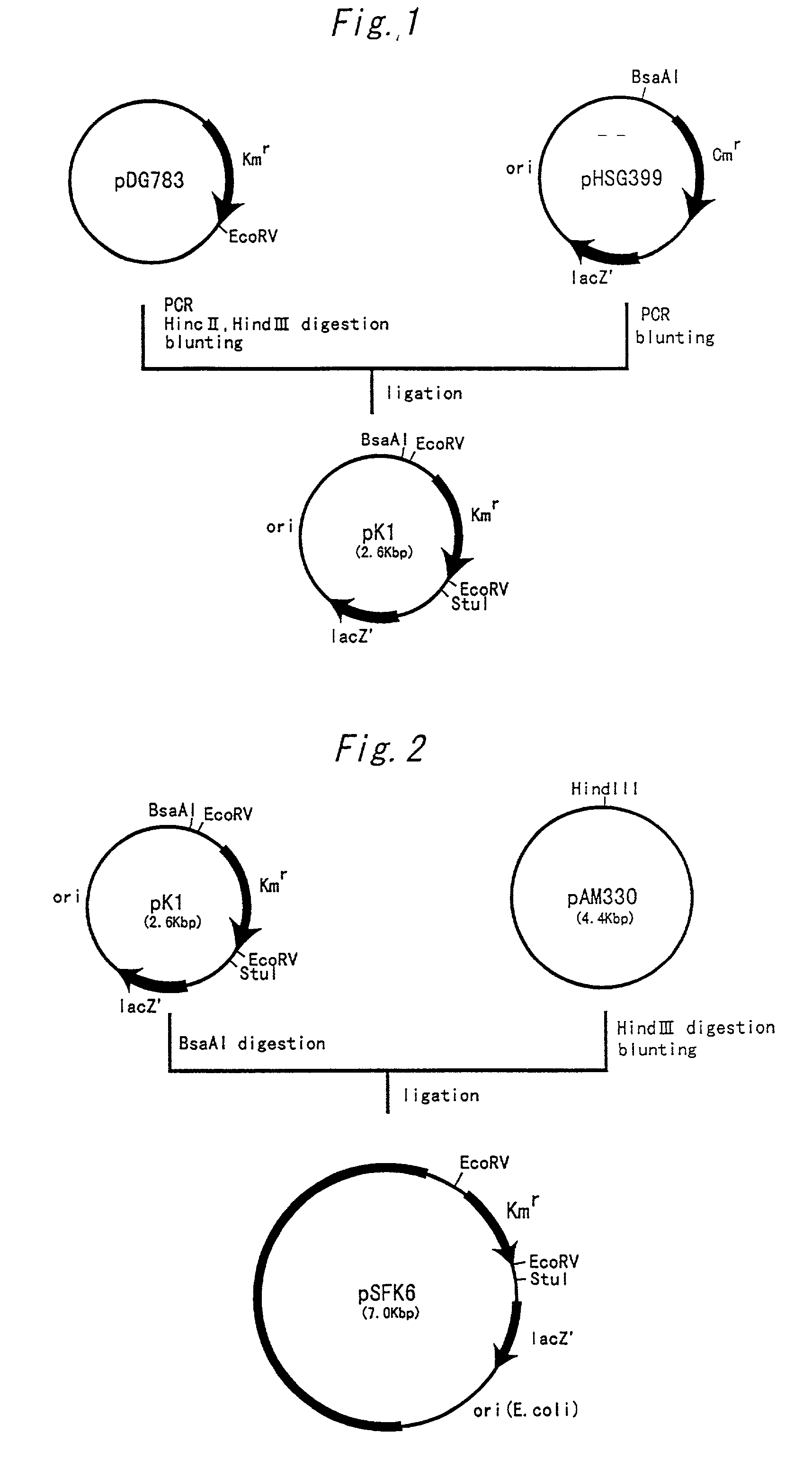Arginine repressor deficient strain of coryneform bacterium and method for producing L-arginine
- Summary
- Abstract
- Description
- Claims
- Application Information
AI Technical Summary
Benefits of technology
Problems solved by technology
Method used
Image
Examples
example 2
Cloning of argR Gene and Amplification Effect thereof in Coryneform Bacteria
[0085] PCR was performed by using chromosome DNA of the Brevibacterium flavum wild strain 2247 (AJ14067) as a template and the oligonucleotides having the nucleotide sequences shown in SEQ ID NO:15 (sequence of the nucleotide numbers 1717-1741 in SEQ ID NO:17) and SEQ ID NO:16 (sequence complementary to the sequence of the nucleotide numbers 2386-2362 in SEQ ID NO:17) as primers (Primers 15 and 16). PCR was performed for 30 cycles with each cycle consisting of reactions at 980C for 10 seconds, 58.degree. C. for 1 minute and 72.degree. C. for 3 minutes by using Pyrobest DNA polymerase (Takara Shuzo Co., Ltd.). The obtained amplified fragment was inserted into the SmaI site of the shuttle vector pSFK6 obtained in Example 1 to obtain plasmid pWR autonomously replicable in coryneform bacteria.
[0086] In order to investigate the amplification effect of argR gene in L-arginine producing coryneform bacteria, pWR was...
example3
tion of argR-disrupted strain of coryneform bacterium and effect of deletion of arginine repressor
[0089] Construction of Plasmid for argR Disruption
[0090] PCR was performed by using chromosome DNA of a wild strain of Brevibacterium flavum, 2247 strain (AJ14067), as a template and the oligonucleotides having the nucleotide sequences shown in SEQ ID NO:19 (sequence of the nucleotide numbers 4-28 in SEQ ID NO:17) and SEQ ID NO:20 (sequence complementary to the sequence of the nucleotide numbers 4230-4211 in SEQ ID NO:17) as primers (Primers 19 and 20). PCR was performed for 30 cycles with each cycle consisting of reactions at 98.degree. C. for 10 seconds, 58.degree. C. for 1 minute and 72.degree. C. for 3 minutes by using Pyrobest DNA polymerase (Takara Shuzo Co., Ltd.). The obtained amplified fragment was inserted into the SmaI site in a multicloning site of cloning vector pHSG399.
[0091] In order to delete the whole ORF considered to encode the arginine repressor from the inserted DN...
PUM
 Login to View More
Login to View More Abstract
Description
Claims
Application Information
 Login to View More
Login to View More - R&D
- Intellectual Property
- Life Sciences
- Materials
- Tech Scout
- Unparalleled Data Quality
- Higher Quality Content
- 60% Fewer Hallucinations
Browse by: Latest US Patents, China's latest patents, Technical Efficacy Thesaurus, Application Domain, Technology Topic, Popular Technical Reports.
© 2025 PatSnap. All rights reserved.Legal|Privacy policy|Modern Slavery Act Transparency Statement|Sitemap|About US| Contact US: help@patsnap.com


